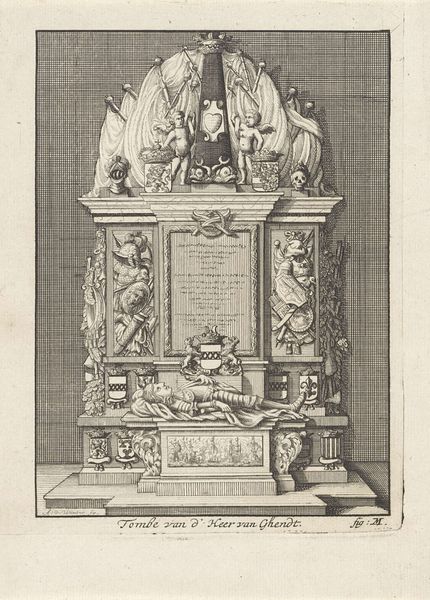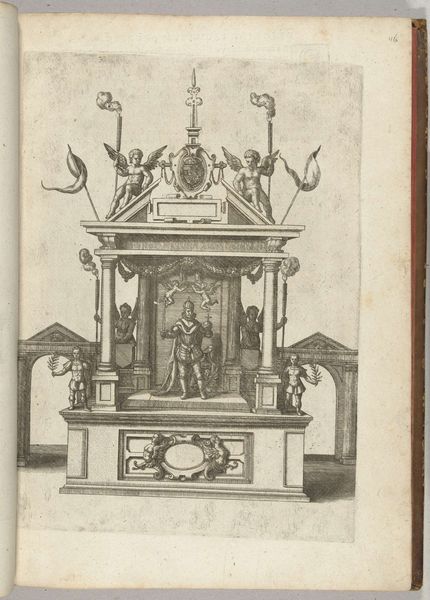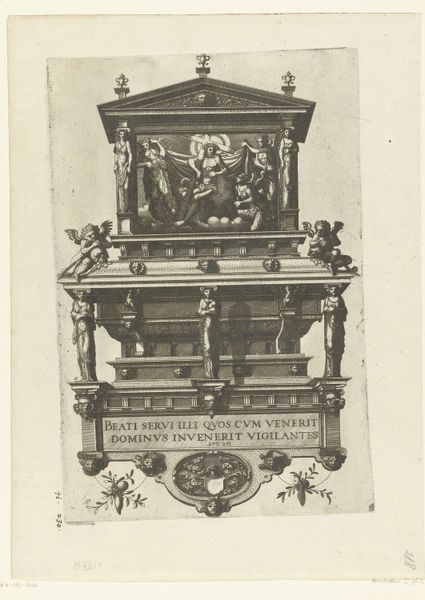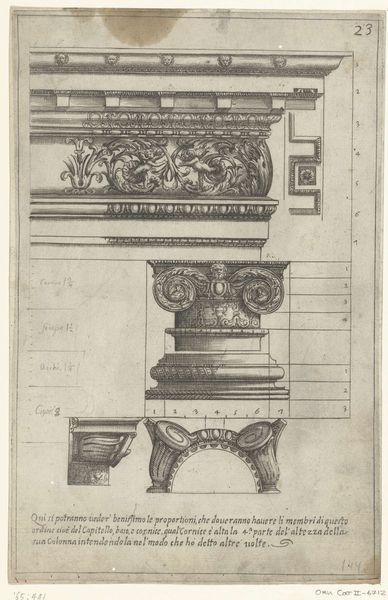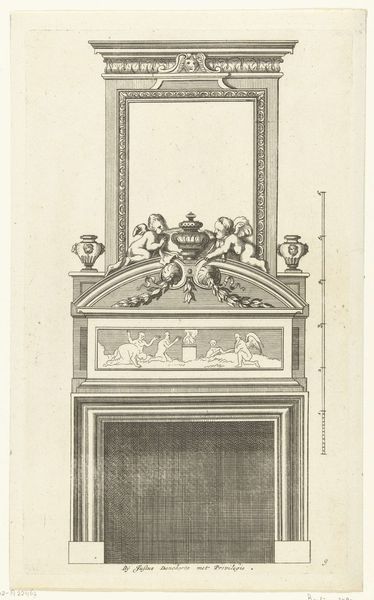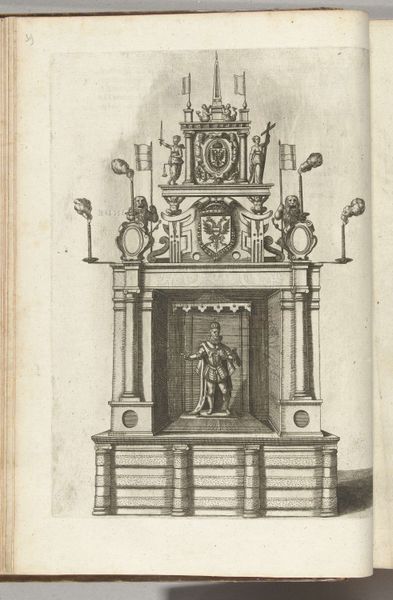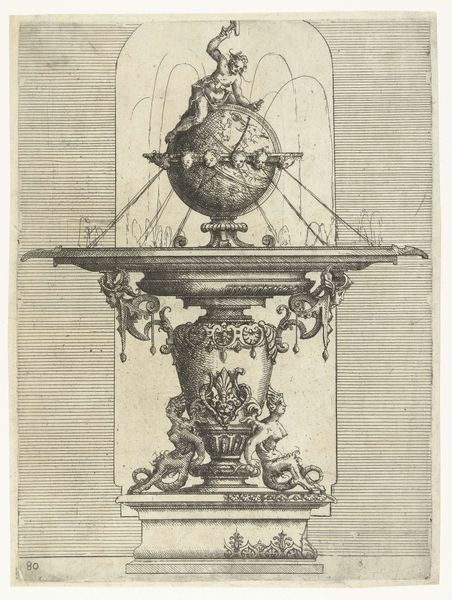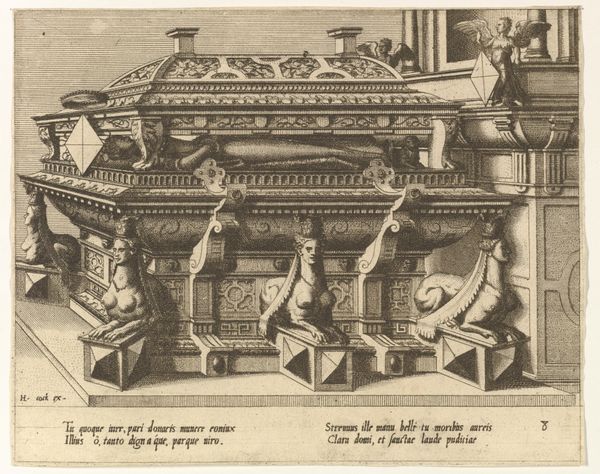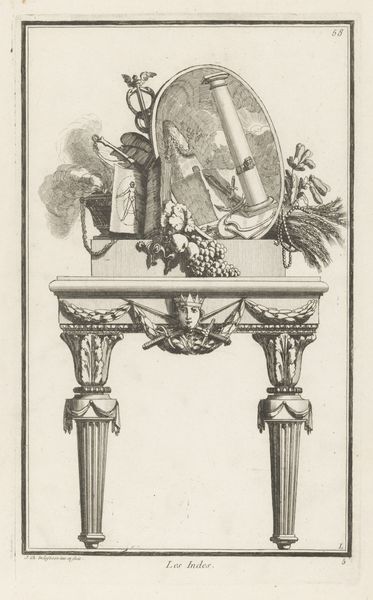
print, engraving
#
portrait
#
baroque
# print
#
old engraving style
#
form
#
line
#
history-painting
#
engraving
Dimensions: height 222 mm, width 167 mm
Copyright: Rijks Museum: Open Domain
Curator: This engraving by Wenceslaus Hollar, created in 1677, depicts the Grafmonument van Henry Bourchier, vijfde graaf van Bath. Editor: Well, my first thought is: very...orderly. A strict monument, almost aggressively symmetrical, like a stone fortress guarding secrets. Those dog figures give it a surprisingly vigilant feel. Curator: Hollar was a prolific and highly skilled printmaker, known for his detailed architectural renderings and portraits. This piece exemplifies the Baroque style with its dramatic ornamentation. Editor: I'm drawn to the density of the line work. You can almost feel the engraver's hand moving across the plate. It makes me wonder what materials were really used to create such a detailed memorial. Curator: That’s interesting, the print serves as a document reflecting social and historical contexts related to class, patronage and representation of power through commemorative objects like tombs. Think about the labor involved not just in Hollar’s work, but also in quarrying, carving, and transporting the stone itself. Editor: Precisely. And the dogs! Who decided on the dog motif? They could signify loyalty, maybe guarding the soul in the afterlife, or are they a personal affectation of the Bourchier family, subtly declaring something more personal amid all the grandeur? It's intriguing how animals in art change our interpretation and emotional connections to a place or an image, especially a place like a tomb! Curator: Given the Bourchier family's noble lineage, the dogs are most likely symbols of fidelity and nobility. Also note how Hollar captures not just the overall design but the texture of the stone, almost turning the print itself into a precious artifact reflecting both artistic and artisan skill. Editor: It truly is, viewing art is always a conversation with not just the image, but the intentions and material culture behind it. Curator: Indeed. It allows a rich multi-layered historical analysis.
Comments
No comments
Be the first to comment and join the conversation on the ultimate creative platform.


